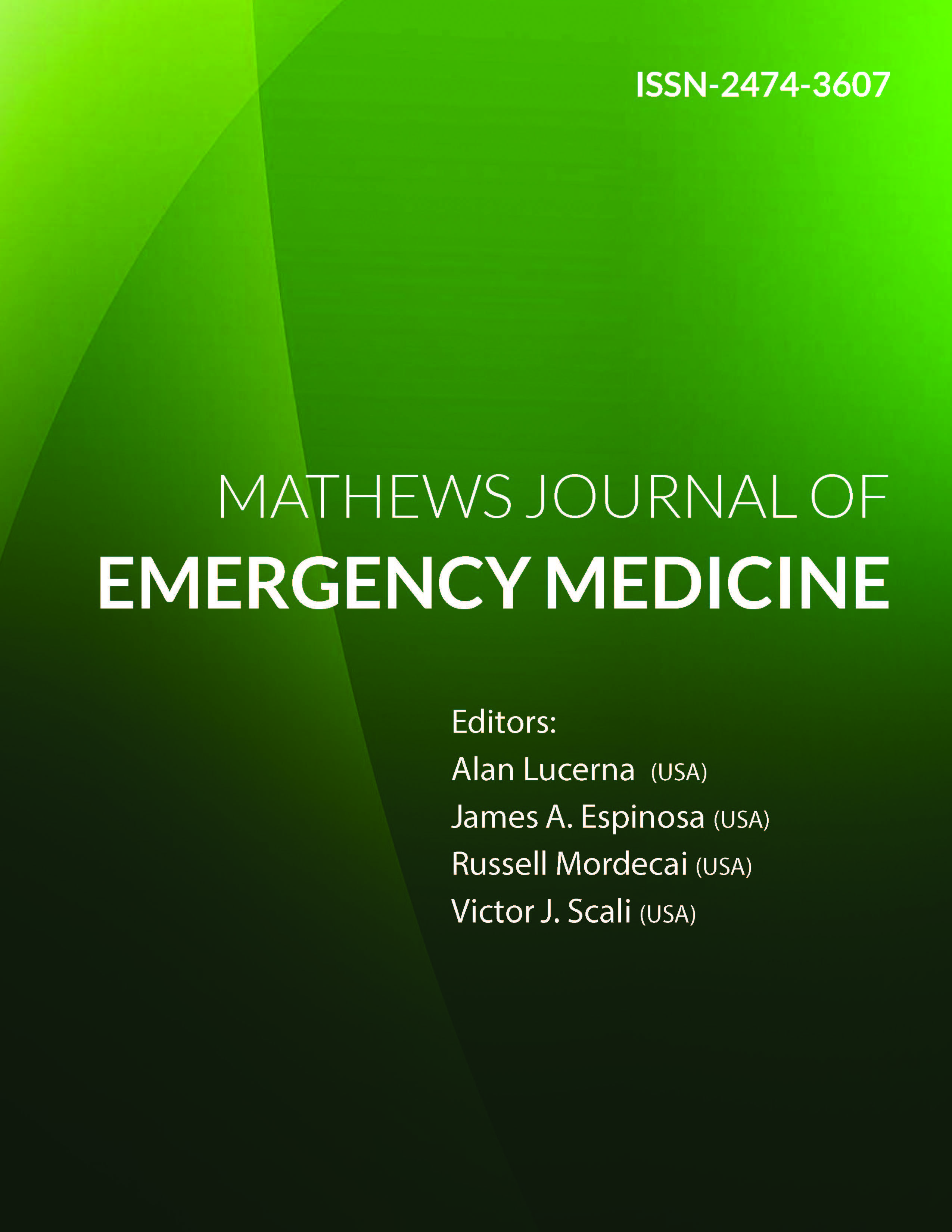
Information Links
Previous Issues Volume 1, Issue 1 - 2016
ED Nurse Navigator: An Analysis of the Effect of an ED Nurse Navigator Program on 72 hour Patient Return Rate and Patient Satisfaction with a new Nomenclature/ Nosology for ED Nurse Navigation Work
Michael Lowry1, Kenneth Minett2, Michelle Evans3, James Espinosa4, Alan Lucerna4, Henny Schuitema5, Victor Scali6
1Department of Emergency Medicine, Corpus Christi Medical Center, Corpus Christi, Texas, USA.
2Department of Emergency Medicine, RWJ University Hospital Somerset, Somerville, NJ, USA.
3Case Manager, Lourdes Medical Center of Burlington County, Willingboro, NJ, USA.
4Department of Emergency Medicine, Rowan University SOM Kennedy University Hospital, Stratford, NJ, USA.
5Chair, Department of Emergency Medicine, Rowan University SOM Kennedy University Hospital, Stratford, NJ, USA.
6Program Co-Director, Emergency Medicine Residency, Rowan University SOM.
Corresponding Author: James Espinosa, Department of Emergency Medicine, Rowan University SOM Kennedy University Hospital, 18 East Laurel Road, Stratford, NJ 08084, USA, Tel: +1 646 241 5695; E-Mail: [email protected]
Received Date: 26 Feb 2016
Accepted Date: 09 Mar 2016
Published Date: 16 Mar 2016
Copyright © 2016 Espinosa J
Citation: Lowry M, Minett K, Evans M, Espinosa J, et al. (2016). ED Nurse Navigator: An Analysis of the Effect of an ED Nurse Navigator Program on 72 hour Patient Return Rate and Patient Satisfaction with a new Nomenclature/ Nosology for ED Nurse Navigation Work. Mathews J Emergency Med. 1(1): 003.
ABSTRACT
A Navigator RN program for an Emergency Department (ED) population was studied. Measures of overall ED outcomes include patient satisfaction and 72 hour return rates. Patient satisfaction increased (statistically significant) in the face of a statistically significant increase in volume. In reference to 72 hour return rates, the increase seen (2.6% to 2.8%) was not statistically significant. In reference to the nurse navigator program, it is possible that the program contributed to the increase in patient satisfaction, especially in the context of increased total ED volume.
Thirty cases involving Navigator RN contact with patients were reviewed. The average time per case by the nurse navigator was 20 minutes. This time, and its associated standard deviation of 11 minutes, could be used in estimations of staffing calculations for nurse navigator programs, and was not found in the literature.
A nosology of contact matrix was created with two components. This proposed model, previously undescribed in the literature, describes a nosology, or nomenclature for nurse navigator cases as by the vector of the original call (nurse navigator to patient, patient to nurse navigator) in a cross matrix with whether the ED referred the patient to the nurse navigator (ED referral, non-ED referral.)
The potential benefits of this data relate to a better understanding of the work of the nurse navigator. This analysis created a novel nosology which could allow for programmatic development and further study by others.
KEYWORDS
Emergency Department Nurse Navigator; Emergency Department (ED) Patient Satisfaction; ED Nurse Navigator; Nurse Navigator Program; Patient Satisfaction in Healthcare.